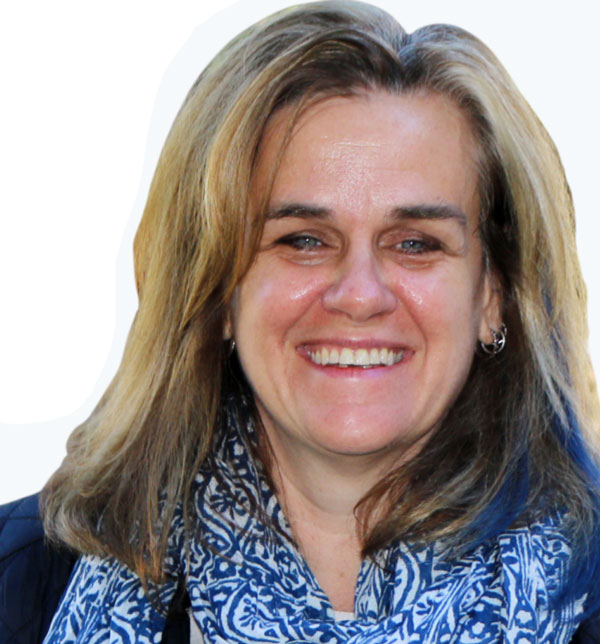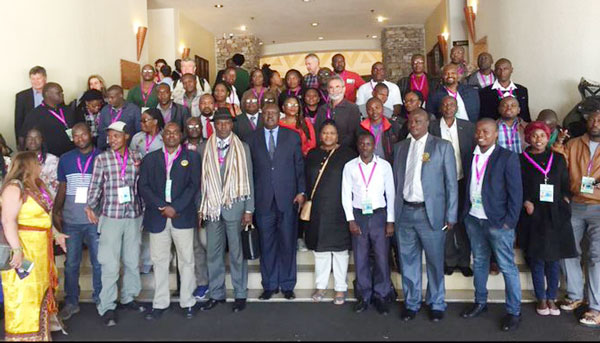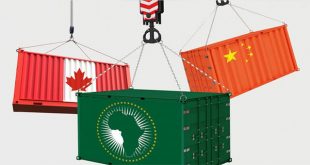
Doreen Robinson, the head of the Wildlife Unit at the UN Environment Programme was one of the co-organizers of the first ever Africa Wildlife Economy Summit held recently in the Zimbabwean town of Victoria Falls. She spoke to The Independent’s Ronald Musoke about what the conveners hoped to achieve from the meeting.
What are your ‘take homes’ from this summit?
I must say I was surprised by the turn up at the summit. We knew that people wanted to come and talk about this topic but the sheer number and diversity of folks who came was pleasantly surprising and it really speaks to the fact that these are important issues that people want to collaborate on but also there are some voices that have not been fully heard. The thing I felt more strongly about during the meeting is that the voice of the communities came out very clearly in the form of declaration for a new deal for communities and wildlife. The voice of the private sector also came out very strongly. There is capital out there (and) there is need for partnership. The private sector want to invest in this economy but some things need to happen to make that investment feasible. This is in terms of creating the right policies, an enabling environment and creating a trusting partnerships and transparency. From the government side, the fact that we had four sitting heads of state and two ministers representing their heads of state and actively engaged in the summit is unprecedented. The summit spoke of the commitment and the understanding of the issues about the wildlife economy – who benefits, who pays, the cost of living with wildlife and how to increase the benefits flowing down to the people on the ground. These are the issues that came out very clearly but the point of the summit was to convene people, raise issues and start bringing the dialogues that are desperate across the entire continent and then change the agenda. I think we have the mandate to go forward and change the agenda and start finding better and more tangible solutions for the continent.
What are some of the policy recommendations that the summit came up with following the two days of deliberation?
There was no specific policies that came out of this summit and that is partly because we are trying to bring together different worlds. We often have folks talking about agriculture, economy and many other different things and then we have wildlife over here. What we are trying to say is that wildlife should be at the centre of economies and now we have to bring these different worlds together. The point of this summit was therefore to raise the issues, to understand where the links are with other sectors. Moving forward, our plan is to look at the existing policy mechanisms such as the Convention on International Trade in Endangered Species of Wild Fauna and Flora ( CITES) and then tie them to agriculture, investment, and infrastructure. Our plan is to take the messages from the summit, take the call to action and then weave it into those processes.
What is the potential of the wildlife economy in Africa?
The potential is quite enormous; and it is even more enormous if you embrace the full concept of the wildlife economy. The wildlife economy is not just about tourism; it is not just about natural products, it includes consumptive and non-consumptive use of wildlife products. The wildlife economy is part of all the resources that flow from other parts of the world; from countries that are willing to give their resources to protect this global good. For me, a rethinking of that economy; making it more efficient and more transparent and putting people at the centre of it, has enormous potential to drive transformational development in Africa.

How do you explain the differences in opinion between southern Africa and the rest of the continent in regards to utilization of wildlife resources?
There are indeed different paradigms of how to manage wildlife around the world and it is important to have those different perspectives because the context around wildlife conservation is different in every country. However, what we are trying to do is to create a forum for learning and sharing and exchanging ideas on the continent in constructive ways. It does not mean that you have to adopt somebody else’s paradigm but there may be something in there that can be useful. There is, for instance, a big wildlife economy in East Africa but it does not look the same as other parts of the continent. So the starting point for East Africa is to look at what you are already trading in, how your wildlife populations are doing and looking at different systems to make sure you are capturing the maximum benefits. I do think there were lessons and experiences coming out on how to increase those benefits. So you have to know where you are but also not be afraid to look at other regions, even if it is not the same paradigm, to see what has worked there and how you bring it back home. There are three pillars that we have been trying to push in regards to the wildlife economy. These have to go together and these include ecological and environmental dimensions where you have to protect your wildlife asset. If you don’t protect your plants and animals, you will not have a sustainable economy. The second is economics; you have to have viable economic investments; you have to have transparent transactions if you choose a consumptive route and there must be systems in place but also there must be an enabling environment for investors to come in. The third bit of it is social. There is a lot packed in that social word but sustainability has to be respectful of the local culture and inclusive of communities who are being asked to be stewards of wildlife but bear the costs.
In many sub-Saharan African countries where wildlife-based tourism is ‘thriving,’ the issue of human-wildlife conflict keeps coming up and it certainly did at this summit. How best should this challenge be handled?
There are two issues that came out of the summit; the first is that there is human-wildlife conflict and it is not just competition for resources; it is life and death in some cases. So, ways to deal with that but also to make sure those communities that live in the midst of wildlife are part of finding solutions. What came out very strongly from the communities at the summit is that they are not helpless. But they need help and that part of the help should come from the government and other players that were here (the civil society).The message of human-wildlife conflict came through very strongly and there is knowledge of how to deal with that but the other point that came out is the need for platforms for communities to be involved in decision making; right from the village level to the international level. I think there was not enough time to come up with all these solutions but, again, this was the beginning of a process to convene folks to find solutions. But it is good the Presidents (Emerson Mnangagwa of Zimbabwe, Mokgweetsi EK Masisi of Botswana, Hage Geingob of Namibia, and Edgar Lungu of Zambia) were in the room when that mandate was given by the communities. We now look forward, certainly at the UN, to helping governments form policies to take action on those issues.
What did you make of President Emmerson Mnangagwa’s displeasure with the international process (CITES) that he says seems to punish southern Africa countries that have done a good job of growing wildlife populations that have gone extinct elsewhere yet they cannot utilize them to boost the local economies?
My take and that of the United Nations is that every member state has an opinion and we actually encourage member states to share those opinions with us so that we can figure out how to be supportive of those perspectives. I think he made strong points and he was actually heard by the delegates. I think the next step is to look at existing policy platforms, how to use those platforms smartly and how to engage and work with other member states to ensure that Zimbabwe is able to protect its wildlife.
Let us assume Zimbabwe and other southern Africa states get their wish at the upcoming CITES COP 19 in Geneva, Switzerland. How sustainable would the sale of wildlife products be in the long run?
I think wildlife trade can be sustainable but you have to look at the economic and ecological elements of the business. In terms of any particular species or any particular proposal, I think the CITES process is robust and there is good science out there that if it is woven together in the dialogue, then trade could be sustainable. But you also have to look at the specifics of the actual trade. Someone said there is no one size fits all and that is very true. We saw that there are commodities and value chains where the species are doing very well and the people are benefiting immensely. So, it is important to look at the lessons of the things that have worked and why they have worked and then look at where it has not worked and why they have not worked to make sure that as we move forward in looking at different options for Africa and African communities, we can build on what we already know.
 The Independent Uganda: You get the Truth we Pay the Price
The Independent Uganda: You get the Truth we Pay the Price



